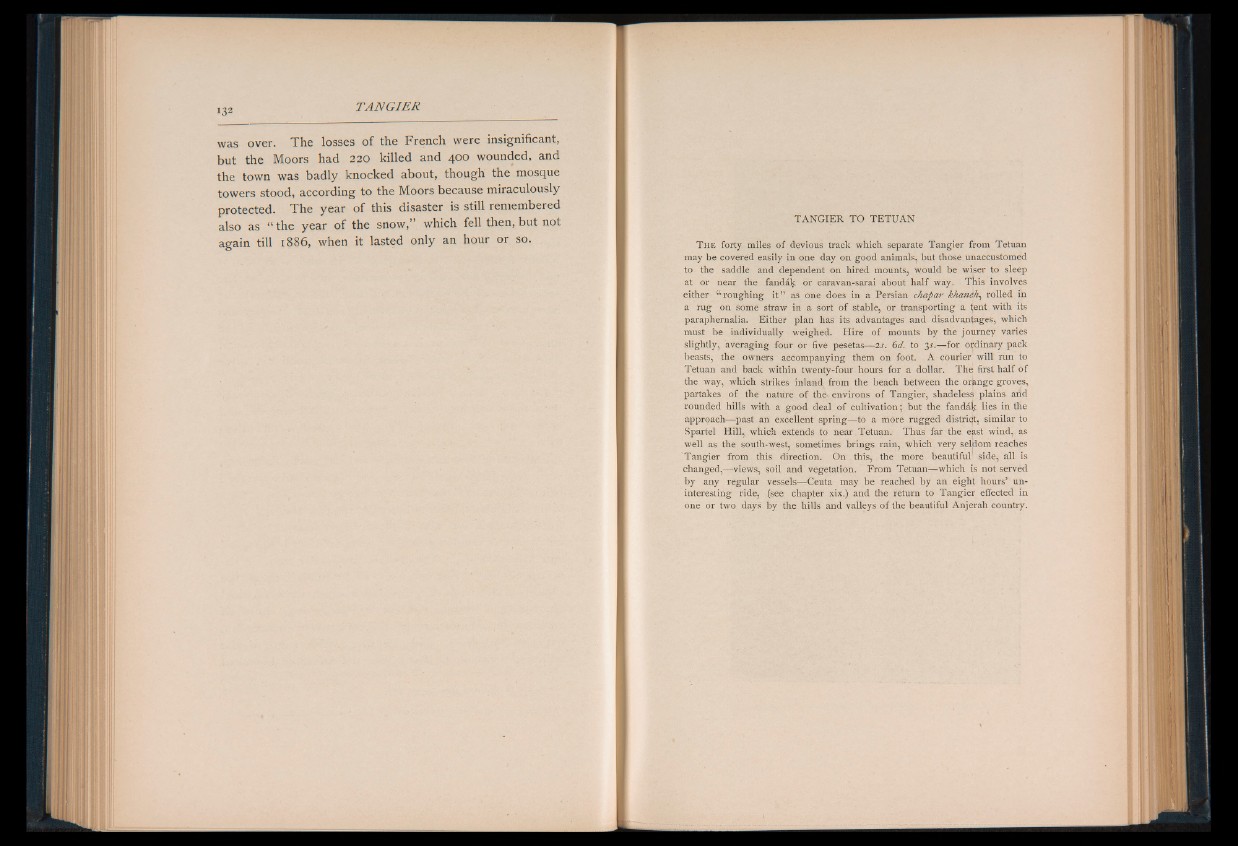
was over. The losses of the French were insignificant,
but the Moors had 220 killed and 400 wounded, and
the town was badly knocked about, though the mosque
towers stood, according to the Moors because miraculously
protected. The year of this disaster is still remembered
also as “ the year of the snow,” which fell then, but not
again till 1886, when it lasted only an hour or so.
TANGIER TO TETUAN
T h e forty miles of devious track which separate Tangier from Tetuan
may be covered easily in one day on good animals, but those unaccustomed
to the saddle and dependent on hired mounts, would be wiser to sleep
at or near the fand&k or caravan-sarai about half way. This involves
either “ roughing it ” as one does in a Persian chapar khanbh, rolled in
a rug on some straw in a sort of stable, or transporting a Ijent.with its
paraphernalia. Either plan has its advantages and disadvantages, which
must be individually weighed. Hire of mounts by the journey varies
slightly, averaging four or five pesetas— 2s. 6d. to 3^.—-for ordinary pack
beasts, the owners accompanying them on foot. A courier will run to
Tetuan and back within twenty-four hours for a dollar. The first half of
the way, which strikes inland from the beach between the orange groves,
partakes of the nature of the environs of Tangier, shadeless plains add
rounded hills with a good deal of cultivation 5 but the fandafc lies in the
approach— past an excellent spring—to a more rugged district, similar to
Spartel Hill, which extends to near Tetuan. Thus far the east wind, as
well as the south-westj sometimes brings rain, which very seldom reaches
Tangier from this direction. On this, the more beautiful side, all is
changed,— views, soil and vegetation. From Tetuan—which is not served
by any regular vessels— Ceuta may be reached by an eight hours’ uninteresting
ride, (see chapter xix.) and the return to Tangier effected in
one or two days by the hills and valleys of the beautiful Anjerah country.